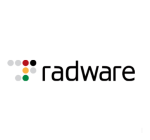What is our primary use case?
We are using Kemp as a reverse proxy for Microsoft Exchange. We are also using the product for load-balancing internal services.
The Kemp virtual appliance is installed in the DMZ and forwards the traffic to the internal servers. We configured the Edge Security Pack (ESP) so that the virtual appliance captures the credentials of the user, validates those against the authentication services, and then lets the user pass through.
Using this solution, it doesn't publish Exchange servers directly over the internet, thus providing security.
How has it helped my organization?
Having a reverse proxy is a secure way to protect access to inside services like Microsoft Exchange. With the ESP configured, we feel that the services are more protected from external threats. There's a lot of attacks possible on Exchange and we needed a solution that would prevent direct access to the web interfaces.
Having the virtual appliance sitting between the internet and the real servers, it intercepts the requests, process them, and can block unwanted requests with the Web Application Firewall.
What is most valuable?
The most valuable feature is the reverse proxy with ESP since it protects forms and provides authentication of web services.
When you configure the listening services, you can implement a lot of security features like the Edge Security Pack that intercepts the requests and processes those before they are sent to the real servers.
There's an integrated Web Application Firewall module that you can activate to protect your online services. The module has an auto-update feature, where Kemp pushes the latest rules automatically to protect you against new threats.
What needs improvement?
The configuration of basic services is pretty straightforward but when you want to configure more advanced settings like the Edge Security Pack feature, it can be somewhat challenging! Even with the documentation, I had to contact the support to get help set this up properly. I think there should be more visual instructions on how to configure advanced features.
Support-wise, I've nothing to complain about. The support technicians are knowledgeable and were able to quickly help me set up and get things working.
The logging feature is somewhat archaic, as you have to go through text files. I think they should implement something more user-friendly for logging.
For how long have I used the solution?
We've been using Kemp for several years. We used the physical appliances for about five years and we recently switched to the virtual.
What do I think about the stability of the solution?
We've been using the product for several years and it never crashed.
What do I think about the scalability of the solution?
This product is pretty scalable with the virtual appliance.
How are customer service and technical support?
Great support, fast and really professional.
Which solution did I use previously and why did I switch?
Kemp was the first solution we used as a reverse proxy.
How was the initial setup?
The initial setup was pretty straightforward.
What about the implementation team?
We implemented in-house with help of Kemp support.
What's my experience with pricing, setup cost, and licensing?
Nowadays, going with the virtual appliance is the easiest way and the cost is reasonable.
Which other solutions did I evaluate?
We did not evaluate other products before choosing Kemp. Instead, we looked at product reviews before purchasing.
Which deployment model are you using for this solution?
On-premises
Disclosure: I am a real user, and this review is based on my own experience and opinions.












